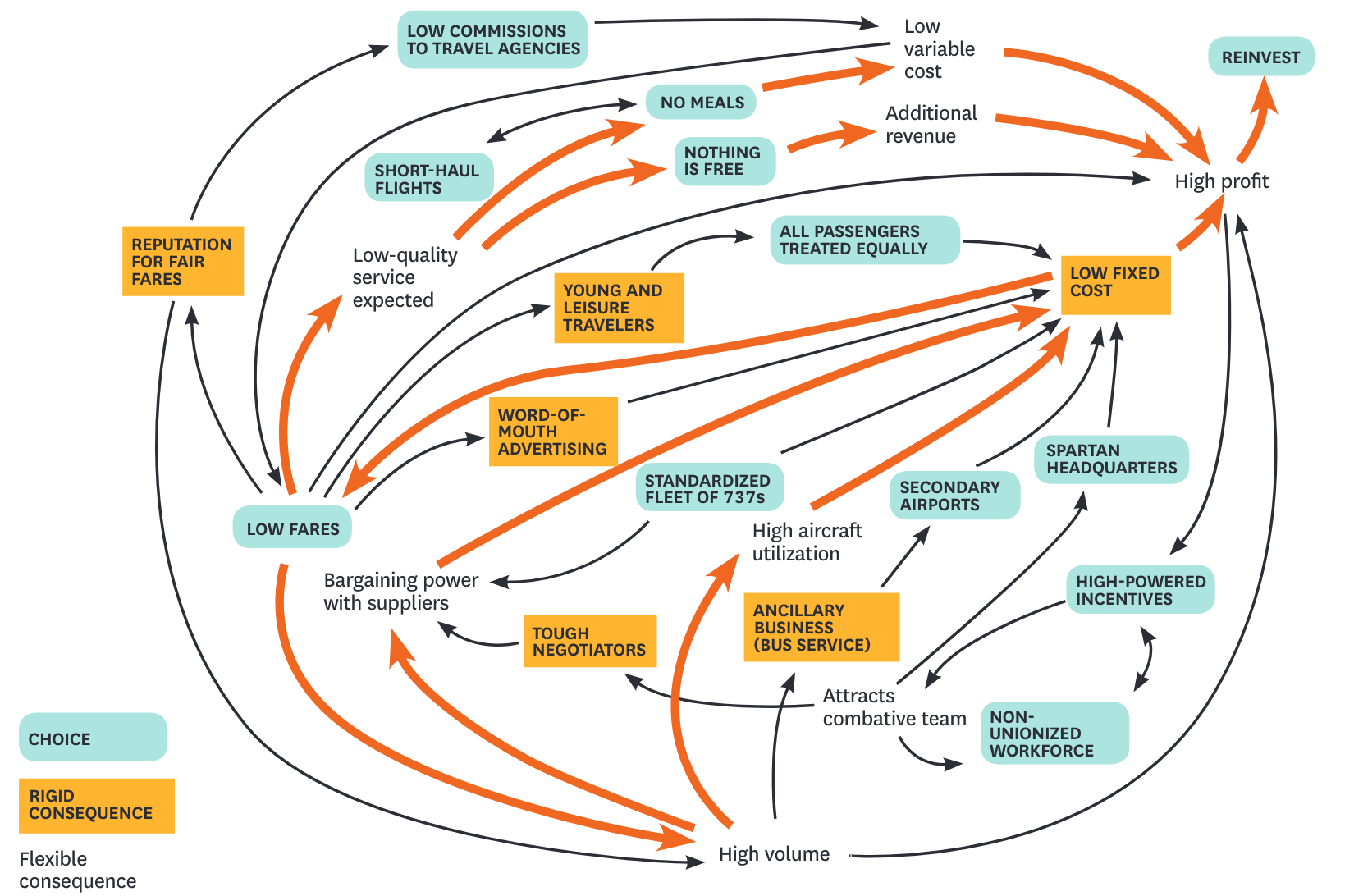The Business Model as a System of Interconnected Elements
The role of business ecosystems and systems thinking in business model innovation.

The business model canvas is an excellent tool to describe the different elements of an organization’s business model. However, when organizations face wicked problems or complex environments, it is important to understand how these elements are dynamically linked to each other. By combining traditional perspectives on business model innovation with systems thinking, we can develop a deeper understanding of business model innovation.
In the second lecture of the master elective Business Model Innovation at the Radboud University Nijmegen, we will move from a static description of business models to a dynamic one. Students will learn how Causal Loop Diagrams (CLDs) can be used to capture the relationships between business model elements.
The Business Ecosystem
The success of many business models depends on the collaboration between multiple organizations. A business ecosystem is a set of actors with varying degrees of multilateral, nongeneric complementarities that are not fully hierarchically controlled (Jacobides, Cennamo & Gawer, 2018). In some situations, organizations can create more value if they leverage nongeneric complementarities between their products or services and the products or services provided by other organizations. There are three types of complementarities (Jacobides, Cennamo & Gawer, 2018):
- Generic Complementarity: A is better with B, but A can be paired with C too.
- Unique Complementarity: “A doesn’t ‘function’ without B,” where A and B can be specific items, steps, or activities. A is maximized with B
- Supermodular Complementarity: “more of A makes B more valuable,” where A and B are two different products, assets, or activities.
Systems Thinking
Just like we can consider a business ecosystem to be a system of interrelated elements, we can represent a business model as a system, too. The business model system consists of internal and external factors. Internal factors are variables under direct control of the organization. External factors consist of the transactional environment (which, for example, includes the organization’s suppliers, strategic partners, and customers) and the contextual environment (which, for example, consists of macroeconomic trends and societal norms).
From Business Model Canvas to Dynamic Business Model
We can think about the business model as a system too. In this course, we use Causal Loop Diagrams (CLDs) to capture the dynamic aspects of business models. A causal loop diagram does not only identify the building blocks of a business model, but it also shows how these building blocks are related to each other. An example of a business model represented by a CLD can be found in “How to design a winning business model” by Casadesus-Masanell and Ricart (2011). They show how the choices and consequences underlying Ryanair’s business model create value.

Required Readings
- Grewatsch, S., Kennedy, S., & Bansal, P. (2023). Tackling wicked problems in strategic management with systems thinking. Strategic Organization, 21(3), 721–732. https://doi.org/10.1177/14761270211038635
- Casadesus-Masanell, R., & Ricart, J. E. (2011). How to design a winning business model. Harvard Business Review, 89(1/2), 100–107.
- Eden, A. C., & Ackermann, F. (2016). Mapping Distinctive Competencies: A Systemic Approach. The Journal of the Operational Research Society, 51(1), pp. 1220 http://www.jstor.org/stable/253943
The Course
This lecture is part of the master elective Business Model Innovation at the Radboud University Nijmegen. The course teaches master students how to redesign an organization’s business model and make it future-proof. In an increasingly interconnected world, organizations are confronted with unprecedented levels of turbulence, uncertainty, and complexity. Global trends such as rapid urbanization, climate change, global economic power shifts, digitalization influence the effectiveness and efficiency of existing business models. To ensure future competitive success, organizations must rethink the way they create, deliver, and capture value. In this course, students will learn how to design a future-proof business model in three steps: Analyze the current business model, Anticipate the future performance of the current business model, and Advise an organization about Business Model Innovations that are most robust and future-proof.
Related Posts

Teaching Courses
This course teaches master students how to redesign an organization’s business model and make it future proof.
Teaching Lectures
A lecture on business ecosystems

Teaching Lectures
The first lecture of the Business Model Innovation master course at the Radboud University Nijmegen.

Teaching Lectures
A lecture on the environmental context, trends, and grand challenges that shape business model innovation.